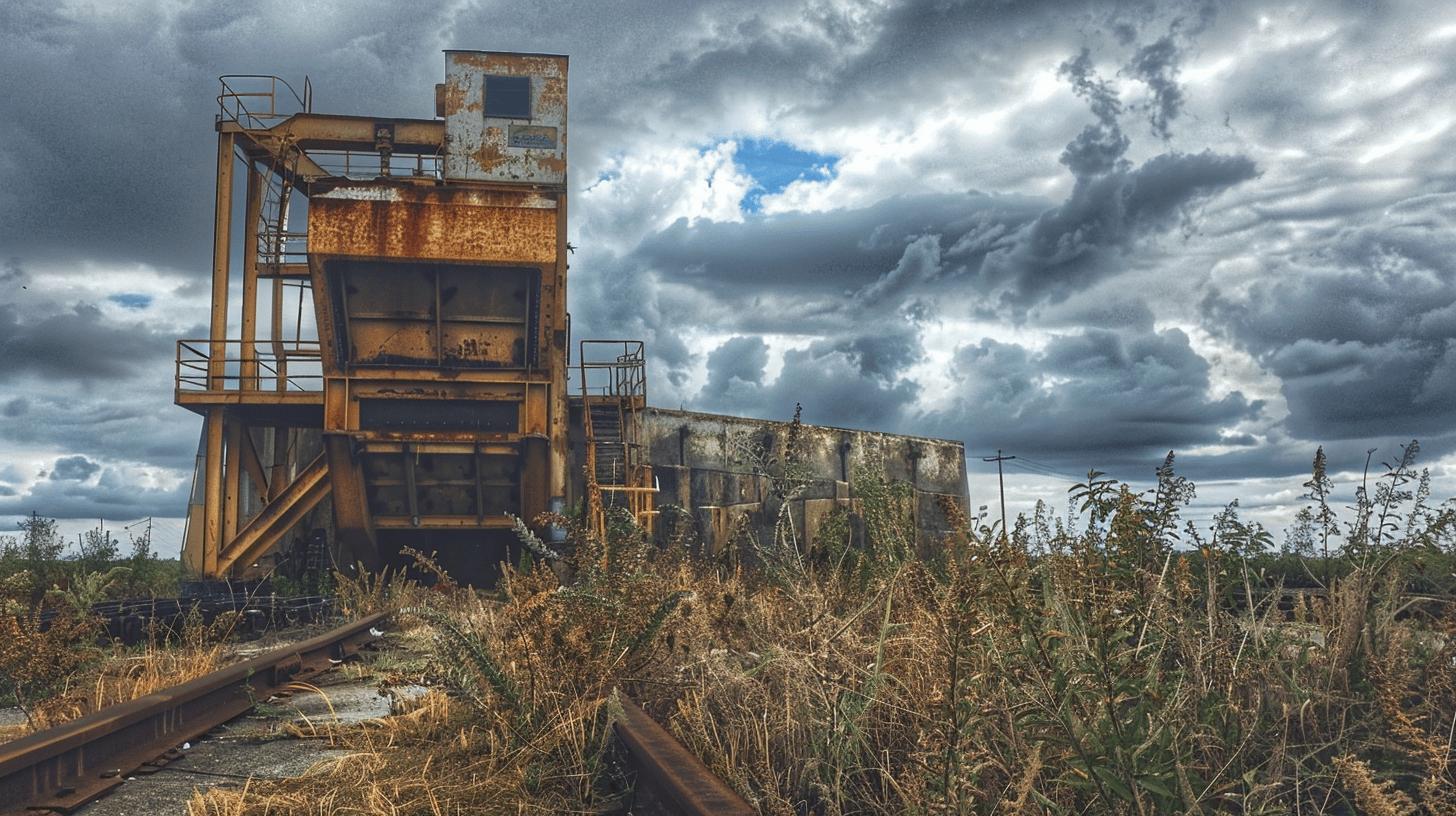Is it possible to imagine a future where Cuba’s iconic sugar industry, once the lifeblood of its economy, now lies in ruins? The collapse of this historically significant sector has left an indelible mark on the island nation, affecting every stratum of society. This blog post delves into the history, downfall, and far-reaching consequences of Cuba’s sugar industry, exploring how its demise has shaped the current economic and social landscape. Discover the myriad factors contributing to this collapse and the potential paths ahead for affected communities and the Cuban economy.
Historical Significance of Cuba’s Sugar Industry
The sugar industry’s roots in Cuba date back to the early 16th century, when Spanish colonists introduced sugarcane cultivation to the island. Over centuries, sugarcane plantations expanded dramatically, becoming a dominant force in Cuba’s agricultural landscape. By the 18th century, sugar production had surged, driven by the labor of enslaved Africans and later by wage laborers. The industry’s significance grew as sugar exports became a major revenue source, contributing substantially to the nation’s GDP. This period marked the beginning of Cuba’s identity as a global sugar powerhouse.
During the 19th and early 20th centuries, Cuba’s sugar industry reached its zenith. The island became one of the world’s largest sugar producers, with vast plantations and advanced milling techniques. Key figures like Francisco de Arango y Parreño played pivotal roles in modernizing the industry and securing international markets. The peak period saw massive sugar exports, which fueled economic growth and positioned Cuba as a critical player in the global sugar market. The industry also laid the groundwork for the development of Cuba’s renowned rum industry, further enhancing its economic importance.
- Major contributions to Cuba’s economy and culture:
- Significant source of national revenue and GDP growth
- Creation of extensive employment opportunities
- Development of infrastructure and transportation networks
- Foundation for the Cuban rum industry
- Cultural influence through festivals and traditions centered around sugarcane harvests
The sugar industry’s impact on Cuban society was profound, shaping the nation’s social and cultural fabric. It provided livelihoods for millions and influenced the development of rural communities. Sugarcane cultivation and processing became ingrained in the daily lives and traditions of the Cuban people. The industry’s dominance also fostered a sense of national identity, with sugar symbolizing both prosperity and the challenges of economic dependency.
Factors Leading to the Collapse of Cuba’s Sugar Industry

The collapse of Cuba’s sugar industry can be attributed to several technological and infrastructural challenges. Outdated machinery and infrastructure played a crucial role, as many sugar mills operated with equipment that had not been modernized for decades. This lack of technological advancement resulted in decreased efficiency and increased production costs. The inability to keep pace with modern agricultural practices severely hindered the industry’s competitiveness on the global stage. Financial and investment issues further exacerbated the situation. There was a significant lack of investment in the sugar sector, both from domestic and international sources. The Cuban government, struggling with limited economic resources, could not allocate sufficient funds for the necessary upgrades and maintenance. Private investment was also scarce, partly due to the economic sanctions imposed by the United States, which deterred foreign investors. This financial stagnation led to a decline in productivity and overall economic impact. External factors such as fluctuating global sugar prices and political challenges also played a pivotal role. The global sugar market became increasingly competitive, with countries like Brazil and Thailand emerging as major producers. This increased competition drove down global sugar prices, making it difficult for Cuban producers to remain profitable. Additionally, the loss of the Soviet Union as a trading partner in the early 1990s dealt a severe blow. The Soviet Union had been one of Cuba’s largest sugar buyers, and its collapse left Cuba scrambling to find new markets.
| Factor | Description |
|---|---|
| Outdated Infrastructure | Lack of modern machinery and technology leading to inefficiency |
| Lack of Investment | Insufficient funds for upgrades and maintenance |
| Global Market Changes | Increased competition and fluctuating sugar prices |
| Political Challenges | Economic sanctions and loss of the Soviet Union as a trading partner |
| Government Policies | Failure to adapt to changing global market conditions |
These factors collectively led to the industry’s decline. The combination of outdated technology, lack of investment, and external economic pressures created an environment where the sugar industry could no longer thrive. Government policies also failed to adapt to these changing conditions, further compounding the issues. As a result, what was once an iconic and thriving industry in Cuba became a shadow of its former self, leading to widespread economic and social repercussions across the nation.
Economic and Social Impact of the Sugar Industry’s Collapse
The collapse of Cuba’s sugar industry has led to immediate and severe economic impacts. Widespread unemployment has struck sugar-dependent regions, leaving thousands without stable income. Families who relied on sugar farming for generations have suddenly found themselves without a livelihood. The lack of alternative employment opportunities has exacerbated economic hardship, pushing many into poverty. The financial instability has affected not just individual households but entire communities, severely diminishing local economies.
Social changes and disruptions have also been significant. The traditional way of life for many rural communities has been upended. Sugar farming was not just an economic activity but a cultural cornerstone, involving entire families and communities in the cultivation and harvest processes. With the industry’s collapse, these traditional practices have been disrupted, leading to a loss of cultural identity and community cohesion. The social fabric of these regions has been strained, as people grapple with the emotional distress and uncertainty of their futures.
- Personal stories from former sugar workers:
- “I worked in the sugar fields for 30 years. Now, I don’t know how to support my family.” – Juan Perez
- “My father and grandfather were sugar farmers. It’s heartbreaking to see our fields abandoned.” – Maria Lopez
- “The factory closure has left our town deserted. Many have moved away, seeking jobs elsewhere.” – Roberto Sanchez
- “I miss the harvest festivals that brought us all together. Those days are gone.” – Elena Garcia
- “We are trying to learn new trades, but it’s hard to start over at this age.” – Carlos Rodriguez
Communities are adapting to these changes in various ways, but the long-term social repercussions remain a concern. Some have attempted to diversify into other agricultural sectors or move towards urban areas in search of employment. Others are receiving training in new trades, supported by government initiatives and aid programs. Despite these efforts, the emotional and financial struggles are far from resolved. The collapse has left an indelible mark on these communities, altering their way of life and posing ongoing challenges for future generations.
Future Implications for Cuba’s Economy

Experts suggest diversifying the economy to mitigate the negative effects of the sugar industry’s collapse. Diversification could involve shifting focus from traditional sugar production to alternative agricultural products and other sectors. By broadening the economic base, Cuba can reduce its vulnerability to market fluctuations and create new revenue streams. This strategy is seen as crucial for stabilizing the economy and fostering long-term growth. Investment opportunities in other sectors, such as tourism and alternative crops, are gaining attention. Tourism, in particular, has shown significant potential due to Cuba’s rich cultural heritage and natural beauty. Developing this sector could generate substantial employment and foreign exchange earnings. Additionally, investing in alternative agricultural products like fruits, vegetables, and biofuels can provide new markets and reduce dependency on sugar. These investments require substantial modernization and infrastructure development to be effective.
- Proposed economic strategies and policies:
- Encouraging private and foreign investment in emerging industries
- Modernizing infrastructure and technology in agriculture
- Developing the tourism sector to harness cultural and natural resources
- Implementing training programs for workforce re-skilling
- Establishing financial support mechanisms for transitioning industries The challenges and opportunities for future economic recovery are multifaceted. A major challenge is securing the necessary investment and resources to modernize infrastructure and support new industries. Additionally, economic policies must be adaptive and forward-thinking to address changing global market conditions. However, the opportunities for growth and diversification present a hopeful outlook. With the right strategies and investments, Cuba can build a more resilient and diversified economy, setting the stage for sustainable development.
Voices from Affected Regions
The Yumuri sugar co-operative, once a thriving center of sugar production, now stands as a testament to the industry’s collapse. For workers like Miguel Guzmán, the shutdown of the co-operative has brought significant emotional and financial struggles. The lives of individuals and families have been deeply impacted, with many facing the harsh reality of losing their primary source of livelihood. The day-to-day existence of these workers has changed dramatically, as they navigate the challenges of an uncertain future.
- Quotes and anecdotes from affected individuals:
- “I worked in the sugar fields for 30 years. Now, I don’t know how to support my family.” – Juan Perez
- “My father and grandfather were sugar farmers. It’s heartbreaking to see our fields abandoned.” – Maria Lopez
- “The factory closure has left our town deserted. Many have moved away, seeking jobs elsewhere.” – Roberto Sanchez
- “I miss the harvest festivals that brought us all together. Those days are gone.” – Elena Garcia
- “We are trying to learn new trades, but it’s hard to start over at this age.” – Carlos Rodriguez
The emotional and financial impacts on the community members of the Yumuri sugar co-operative are profound. Many individuals have expressed feelings of loss and uncertainty, as the collapse has not only taken away their jobs but also disrupted the social fabric of their lives. The struggle to adapt and find new means of livelihood remains a daunting task for these rural communities, underscoring the widespread repercussions of the industry’s decline.
Final Words
Cuba’s iconic sugar industry, once a global powerhouse, faces lamentation for its collapse. With the historical significance deeply ingrained in Cuban society and economy, its decline has led to widespread economic and social repercussions.
Factors such as outdated infrastructure, lack of investment, and external political and market challenges compounded the industry’s downfall. The resulting unemployment and societal disruptions have been profound.
Future economic strategies and diversification offer hope, but rebuilding remains a complex challenge. Cuba laments the loss, yet the journey toward recovery and adaptation continues with resilience and possibility.
FAQ
What happened to Cuba’s sugar industry?
The Cuban sugar industry declined due to outdated infrastructure, lack of investment, fluctuating global prices, economic sanctions, and the loss of the Soviet Union as a trading partner.
How did sugar affect the economy and people in Cuba?
Sugar exports were a major revenue source for Cuba, crucial to the nation’s GDP, and provided substantial employment, shaping the economy and lifestyle of many Cubans.
What event caused the boom in Cuban sugar?
The sugar boom was triggered by rising global demand in the early 19th century, fueled by technological advancements in production and increased labor availability following the abolition of the transatlantic slave trade.
Why did Cuba develop into a major sugar producer in the first part of the nineteenth century?
Cuba became a major sugar producer due to favorable climate conditions, fertile soil, advancements in sugar production technology, and increased labor supply after the transatlantic slave trade was abolished.

